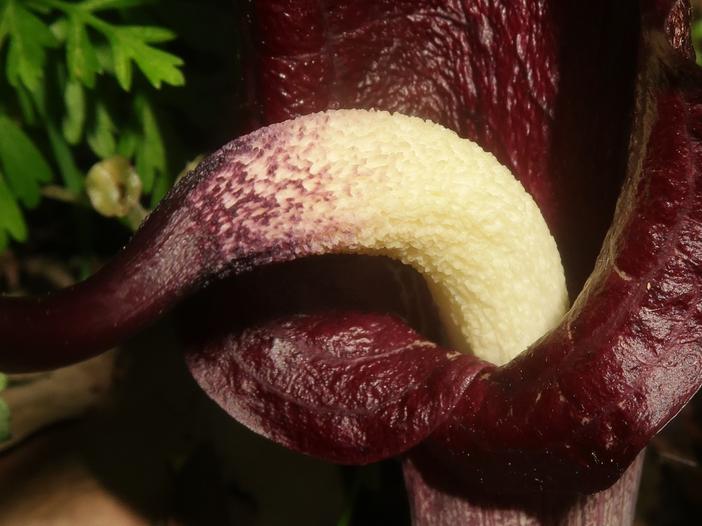Asian Jack-In-The-Pulpit
(Arisaema thunbergii)
Asian Jack-In-The-Pulpit (Arisaema thunbergii)
/
/

Qwert1234
CC BY-SA 4.0
Image By:
Qwert1234
Recorded By:
Copyright:
CC BY-SA 4.0
Copyright Notice:
Photo by: Qwert1234 | License Type: CC BY-SA 4.0 | License URL: https://creativecommons.org/licenses/by-sa/4.0 | Uploader: Qwert1234 | Publisher: Wikipedia Commons




















Estimated Native Range
Summary
Arisaema thunbergii, commonly known as Asian Jack-In-The-Pulpit, is a deciduous perennial herb native to forest understories and shaded areas in East Asia, including Japan, Korea, and Taiwan. It typically grows to a height and width of 1-2 feet (0.3-0.6 meters). The plant is characterized by its unique inflorescence, a hooded spathe that is purple and white, often with stripes or spots, which surrounds a central spadix. The flowering season is in spring, and while the flowers are not particularly showy, they are intriguing and have a distinctive appearance. The foliage is also attractive, with large, trifoliate leaves that add texture to garden settings.
Asian Jack-In-The-Pulpit is valued for its exotic-looking flowers and foliage, which can add a touch of the unusual to shade gardens and woodland settings. It is often used in cultivation for border planting, as an accent in shaded areas, or in naturalized woodland gardens. This plant prefers part shade to full shade and requires consistently moist soil with good drainage. It is relatively low maintenance but benefits from the addition of organic matter to the soil. While generally disease-free, it can be susceptible to root rot if overwatered or planted in poorly draining soils. It is important to note that all parts of Arisaema thunbergii are toxic if ingested, so care should be taken if planting in areas accessible to pets or children.CC BY-SA 4.0
Asian Jack-In-The-Pulpit is valued for its exotic-looking flowers and foliage, which can add a touch of the unusual to shade gardens and woodland settings. It is often used in cultivation for border planting, as an accent in shaded areas, or in naturalized woodland gardens. This plant prefers part shade to full shade and requires consistently moist soil with good drainage. It is relatively low maintenance but benefits from the addition of organic matter to the soil. While generally disease-free, it can be susceptible to root rot if overwatered or planted in poorly draining soils. It is important to note that all parts of Arisaema thunbergii are toxic if ingested, so care should be taken if planting in areas accessible to pets or children.CC BY-SA 4.0
Plant Description
- Plant Type: Herb
- Height: 1-2 feet
- Width: 1-2 feet
- Growth Rate: Slow
- Flower Color: Purple, White
- Flowering Season: Spring
- Leaf Retention: Deciduous
Growth Requirements
- Sun: Part Shade, Full Shade
- Water: Medium
- Drainage: Medium, Fast
Common Uses
Deer Resistant, Showy Flowers
Natural Habitat
native to forest understories and shaded areas in East Asia, including Japan, Korea, and Taiwan
Other Names
Common Names: Arisaema, Cobra Lily, 무늬천남성
Scientific Names: , Arisaema thunbergii, Flagellarisaema thunbergii,
GBIF Accepted Name: Arisaema thunbergii Blume